 |
 |
 |
| |
Impact of integrase inhibitors on cardiovascular events
in persons starting ART; INSTI did not increase CVD events in Swiss Cohort
|
| |
| |
New Heart Disease Rate Similar With Integrase Inhibitors and Other First ART
30th CROI, Conference on Retroviruses and Opportunistic Infections, February 19-22, 2023, Seattle
Mark Mascolini
People starting antiretroviral therapy (ART) with an integrase inhibitor (INSTI) had the same new cardiovascular disease rate as people starting different first antiretrovirals, according to an 8-year 5362-person study in Switzerland [1]. The finding gives some reassurance that early weight gain with integrase inhibitors may not have a rapid impact on the cardiovascular system, at least not in people like this Swiss cohort starting an INSTI in their first antiretroviral regimen.
But a 29,340-person study of adults starting an INSTI in 17 European and Australian cohorts linked INSTI use, compared with no INSTI use, to a higher risk of cardiovascular events in the first 24 months of INSTI therapy but not after that [2]. The new Swiss study did not reproduce this finding. The studies used the same cardiovascular event endpoint (see below), but people in the 17-cohort study could have non-INSTI antiretroviral experience.
Researchers looked at members of the observational Swiss HIV Cohort Study (SHCS) who had never taken an antiretroviral in the period starting in May 2008 and who had a detectable viral load when they began INSTI-based ART or a non-INSTI combination. The primary outcome was the first cardiovascular disease event, either a myocardial infarction (MI), stroke, or an invasive cardiovascular procedure—the same endpoint as in the 17-cohort study [2]. If a person stopped their initial regimen in the Swiss study, statisticians dropped them from the analysis at that point.
The study population of 5362 ART-naive people included 1837 (34%) who started an INSTI and 3525 who started other antiretrovirals. Median age was 39 in the INSTI group and 38 in the non-INSTI group. Median body mass index stood in the high normal range in both groups, and lowest-ever CD4 count was higher in the INSTI cohort (330 vs 278). Women made up 16% of the INSTI group and 24% of the other group. Respective proportions of Africans were 11% and 18%.
Only 1.5% of each study group had a history of heart disease, while similar high proportions (46% and 47%) currently smoked, and 10% had hypertension. Other factors of interest in the INSTI and non-INSTI groups were lipid-lowering therapy (2.6% and 1.8%), diabetes (2.1% and 1.8%), abacavir use (23% vs 12%), and tenofovir alafenamide use (40% vs 1.4%).
Raltegravir, the first integrase inhibitor, got licensed in Switzerland in 2008 and INSTIs earned a guideline recommendation in 2012. Two years later INSTI therapy supplanted non-INSTI therapy as the most-prescribed initial regimen. Today INSTI combinations make up 96% of first-line regimens in this Swiss cohort, with dolutegravir the most prescribed (53%), followed by bictegravir (18%), elvitegravir (16%), and raltegravir (13%). Boosted protease inhibitors anchor 52% of non-INSTI regimens and nonnucleosides 43%.
Swiss researchers counted 116 cardiovascular events within a median 4.9 years of starting ART, with marginally more in INSTI takers. But after statistical adjustment for cardio risk factors (in pooled logistic regression models), cardiovascular event rates did not differ between the INSTI contingent and the non-INSTII group when comparing adjusted cumulative incidence curves. After 1 year of ART in this adjusted analysis, the cardio risk difference between INSTIs and non-INSTIs stood at -0.2% (0.5 to 0.1). And that risk difference did not move into significant territory after 2, 5, or 8 years of ART.
The results suggest that cardiovascular event rates do not differ between antiretroviral-naive people starting an INSTI versus a non-INSTI combination, at least in a population like this one with a median starting body mass index in the normal zone, close follow-up, and a high standard of care. The research team called for similar population studies in people switching from non-INSTI treatment to an INSTI.
References
1. Surial B, Chammartin F, Damas J, et al. Impact of integrase inhibitors on cardiovascular events in persons starting ART. 30th CROI, Conference on Retroviruses and Opportunistic Infections, February 19-22, 2023, Seattle. Abstract 149.
2. Neesgaard B, Greenberg L, Miró JM, et al. Associations between integrase strand-transfer inhibitors and cardiovascular disease in people living with HIV: a multicentre prospective study from the RESPOND cohort consortium. Lancet HIV. 2022;9:e474-e485. doi: 10.1016/S2352-3018(22)00094-7.
https://www.thelancet.com/journals/lanhiv/article/PIIS2352-3018(22)00094-7/fulltext
https://www.natap.org/2021/CROI/croi_103.htm
https://www.natap.org/2022/HIV/PIIS2352301822000947.pdf

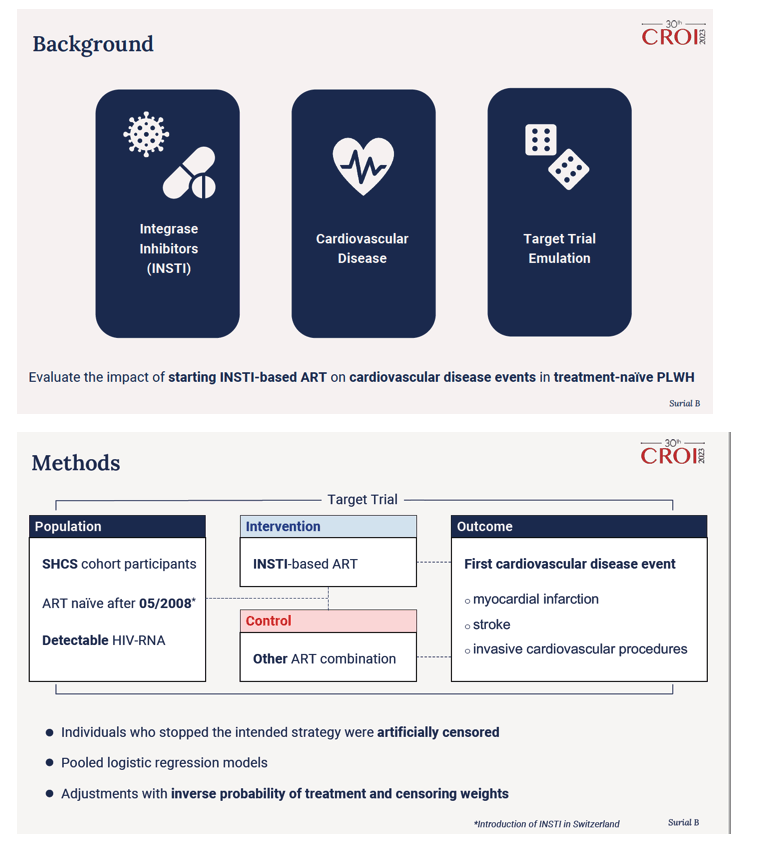
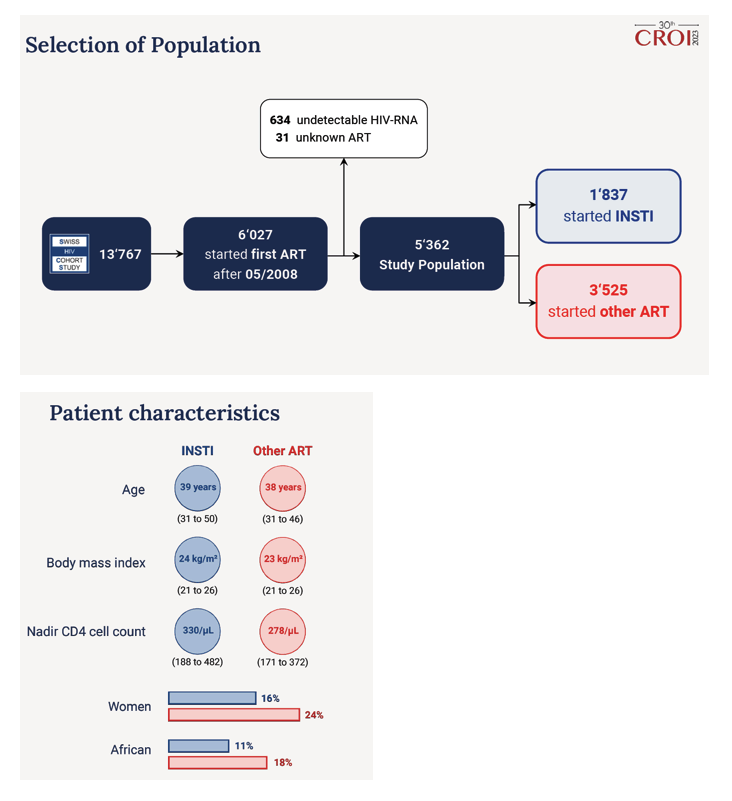
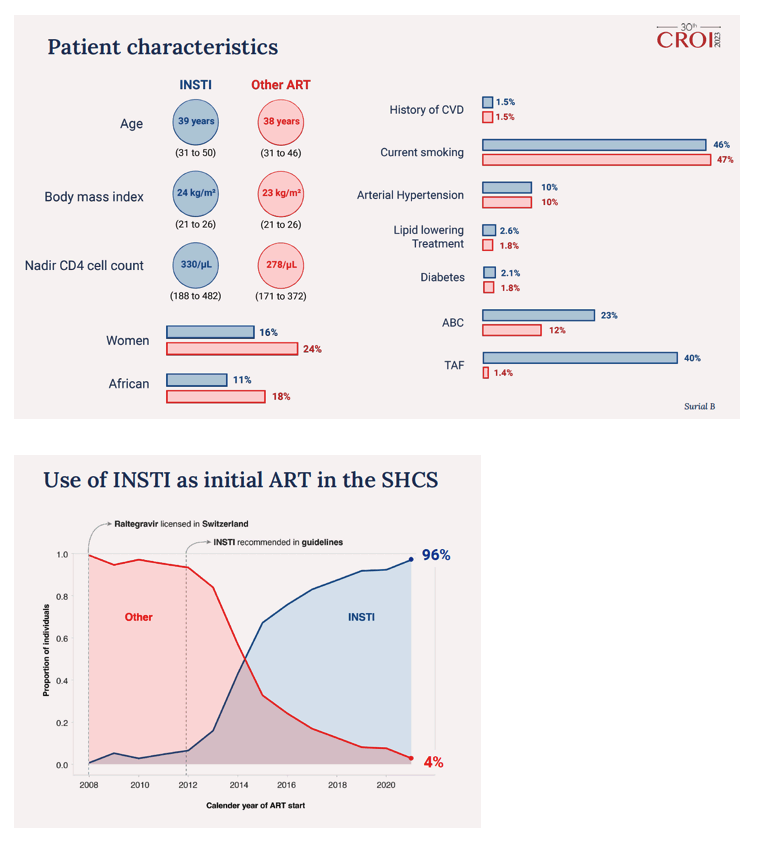
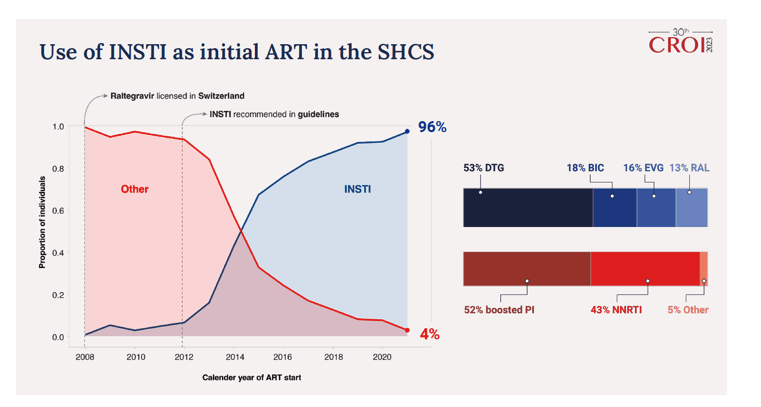

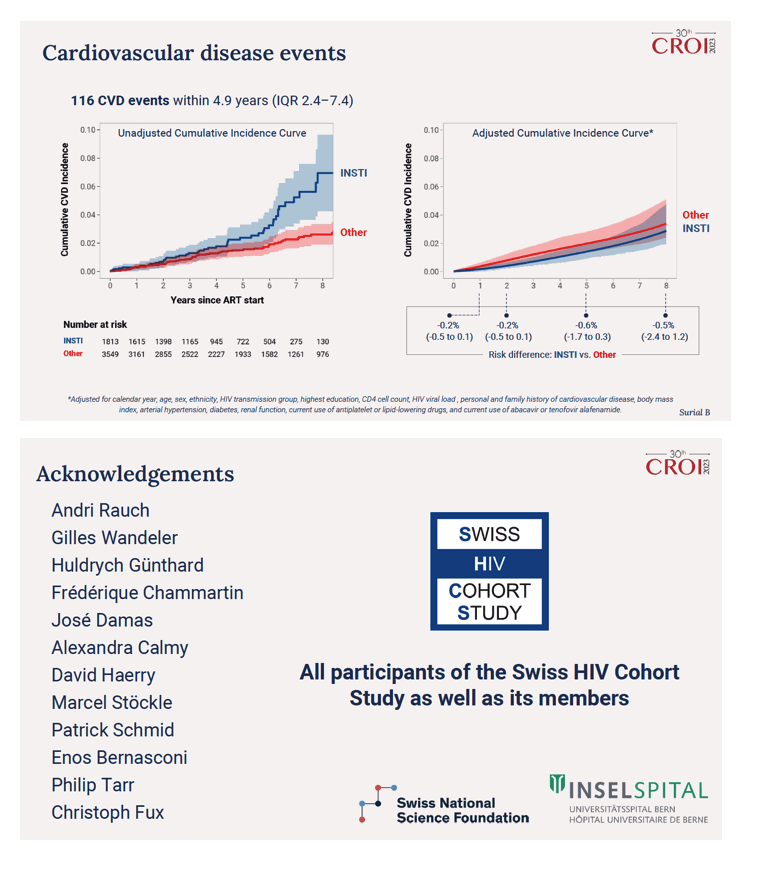
|
| |
|
 |
 |
|
|